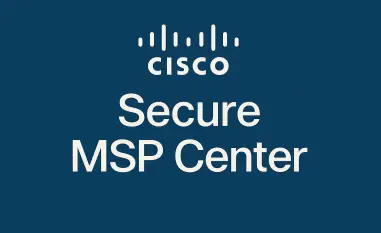In today’s digital age, safeguarding your online privacy is more crucial than ever. With the increasing number of cyber threats, data breaches, and government surveillance, ensuring your online activities remain private has become a priority for many. While Virtual Private Networks (VPNs) have long been a popular choice for enhancing online privacy, they come with their own set of vulnerabilities and limitations. This article explores various alternatives to VPNs that can help you maintain your online privacy more effectively and offer different advantages based on your specific needs.
Onion Routing (Tor)
Enhanced Anonymity with Tor
Onion Routing, commonly known as Tor, offers an incredibly high level of anonymity compared to traditional VPNs. Tor works by encrypting your data multiple times and routing it through a series of volunteer-run servers, each one decrypting just a single layer before passing it on to the next. This sophisticated method ensures that no single server in the chain knows both the origin and the destination of the data, thus making it extremely challenging for any third party to trace your activities on the network.
The layered encryption used by Tor can be likened to peeling away the layers of an onion, giving rise to its name. This multi-layered approach makes it particularly effective for those who require a robust level of anonymity for sensitive activities. However, the entry nodes of Tor can still be visible to your Internet Service Provider (ISP), which might indicate that you’re using Tor. Despite this, Tor remains a powerful tool for those seeking enhanced online anonymity, particularly for avoiding government censorship or accessing restricted content.
Limitations of Tor
Despite its robust anonymity features, Tor is not without its drawbacks. One significant limitation is the potential visibility of Tor’s entry nodes by ISPs, potentially exposing your use of the network, even if they can’t see what you’re doing on it. Moreover, this method of routing traffic through multiple layers significantly slows down connection speeds, making Tor less suitable for activities that require substantial bandwidth, such as video streaming or online gaming.
The slower speed is a result of the extensive encryption process and the fact that your data is often routed through numerous international servers, adding considerable latency. This can make everyday internet use noticeably sluggish. Therefore, while Tor is an excellent choice for activities requiring high anonymity, it’s not the best option for those needing efficient performance for data-intensive tasks. Understanding these limitations is crucial in deciding when and how to use Tor effectively for your specific privacy needs.
Identity and Access Management (IAM)
Protecting User Identities
Identity and Access Management (IAM) systems are commonly employed in organizational settings to protect user identities and prevent unauthorized data access. Unlike VPNs, IAM solutions do not primarily focus on hiding IP addresses. Instead, they center around securing user identities through multiple forms of verification, such as multi-factor authentication, biometric checks, and robust password policies. This multifaceted approach ensures a high level of security, significantly reducing the risk of identity theft and unauthorized access to sensitive information.
IAM solutions are particularly effective in environments where controlling access to various resources is crucial. By ensuring that only authenticated users can access critical data and systems, IAM reduces the likelihood of data breaches. Personal usage of IAM tools, such as password managers, can also enhance online security by generating and storing complex passwords, further minimizing risks associated with password reuse and weak passwords.
Popular IAM Solutions
Several IAM solutions are available on the market, each with unique features tailored to different needs. For example, Zoho Vault offers AES 256-bit encryption, automatic inactivity timeout, and multi-factor authentication, providing a comprehensive suite of tools for both individual users and organizations. These features help ensure that data remains secure, even if one authentication factor is compromised.
Similarly, Microsoft’s Entra ID and Google’s IAM services are robust options for organizations seeking scalable and reliable identity management solutions. However, these solutions often come without free trials, which may limit preliminary testing for potential users. Nonetheless, the high level of security and functionality they provide makes them worthy investments for those serious about securing their online identities. As cyber threats continue to evolve, adopting advanced IAM systems can be a crucial step in protecting against unauthorized access and ensuring online privacy.
Privileged Access Management (PAM)
Enhanced Security for Privileged Users
For administrators and superusers who typically have elevated access levels within an organization, Privileged Access Management (PAM) offers a specialized approach to security. PAM solutions are specifically designed to address the risks associated with privileged accounts by introducing stringent controls over these high-level access points. These controls include the enforcement of strong authentication measures, activity monitoring, and automated responses to suspicious activities, effectively thwarting sophisticated hacking attempts and social engineering attacks.
Privileged accounts, if compromised, can serve as gateways to an organization’s most sensitive data and systems. Therefore, PAM solutions focus on minimizing this risk by managing and securing these accounts through role-based access controls, ensuring that users only have access to the data and systems necessary for their roles. By implementing such measures, organizations can significantly reduce the potential for insider threats and external attacks targeting privileged accounts.
Features of PAM Solutions
ManageEngine’s PAM360 is an effective example of a comprehensive PAM solution that offers numerous features designed to enhance security for privileged users. It includes role-based password ownership, which ensures that only authorized users can access privileged accounts, and automated password resets, reducing the risk of password-related security breaches. Additionally, PAM360 provides capabilities for monitoring user sessions, enabling real-time tracking of activities performed by privileged users and ensuring that any suspicious behavior can be quickly identified and addressed.
These features make PAM360 a robust choice for organizations with stringent security needs, particularly those in industries that are highly regulated or possess valuable intellectual property. By leveraging such advanced PAM solutions, organizations can better protect their critical assets and maintain the integrity of their systems. As cyber threats continue to grow in sophistication, the adoption of effective PAM solutions will become increasingly important for ensuring the security of privileged accounts and safeguarding sensitive information.
Zero Trust Network Access (ZTNA)
The Zero Trust Model
Zero Trust Network Access (ZTNA) is an innovative approach to network security that shifts from traditional perimeter-based security models to one that enforces strict authentication for every user and device, irrespective of their location. In a zero-trust environment, it is assumed that no user or device can be trusted by default, whether inside or outside the network. This model significantly reduces the attack surface by ensuring that access is granted based on comprehensive and continuous verification of the user’s identity and the device’s security status.
ZTNA relies on a private network of applications and services that can only be accessed after successful authentication. This model ensures that everyone, including internal employees, must verify their identity independently for each access attempt. By compartmentalizing access controls and monitoring activities continuously, ZTNA helps in mitigating risks associated with lateral movement within the network, which is often exploited by cyber attackers once they gain entry.
Implementing ZTNA
NordLayer by NordVPN is an example of a ZTNA solution that enhances security by integrating with multiple VPN servers. This multi-layered approach ensures that even if one server is compromised, the overall security of the network remains robust. NordLayer offers features such as centralized control over network access, enabling administrators to implement security policies across various branches or remote teams dynamically. Additionally, it supports seamless integration with existing IT infrastructure, making it easier for organizations to adopt a zero-trust model without significant disruptions.
Implementing ZTNA can help organizations move towards a more secure and resilient network architecture, especially in today’s environment with increasing remote work and cloud-based services. By adopting a zero-trust approach, organizations can protect themselves from the ever-evolving landscape of cyber threats and unauthorized access attempts, ensuring that their networks remain secure while maintaining operational efficiency.
SSH Tunneling
Securing Specific Applications
Secure Shell (SSH) tunneling is a highly effective alternative to VPNs that focuses on securing specific applications or ports rather than encrypting the entire network. SSH tunneling works by creating a secure and encrypted channel between the user’s local machine and a remote server, ensuring that data transmitted through this channel is protected from eavesdropping and tampering. This approach is particularly beneficial for tasks such as secure file transfers, remote system administration, and accessing internal network resources without exposing the entire network’s identity to potential threats.
SSH tunneling is often used by IT professionals and developers who need to securely access remote systems over an unsecured network. By configuring SSH tunnels, users can securely connect to internal company servers or cloud-based systems, thereby protecting sensitive data during transmission. The flexibility of SSH tunneling allows for its application in various scenarios, making it a versatile tool for enhancing online privacy and security.
Technical Complexity
While SSH tunneling offers a targeted approach to privacy and security, it can be technically complex to set up and manage, particularly for users with limited technical expertise. Establishing an SSH tunnel typically involves configuring both the client and server sides, setting up key-based authentication, and ensuring the correct routing of traffic through the tunnel. For those unfamiliar with these processes, the initial setup can be daunting and prone to configuration errors.
Fortunately, a range of specialized applications and tools are available to simplify the process of managing SSH tunneling across different operating systems. These tools often provide user-friendly interfaces and automated setup processes, making it more accessible to a broader audience. By utilizing these applications, users can leverage the benefits of SSH tunneling without needing in-depth technical knowledge, thus expanding its usability for securing specific applications and enhancing overall online privacy.
Garlic Routing (I2P)
Decentralized Privacy with I2P
Garlic routing, primarily used within the Invisible Internet Project (I2P), is a decentralized method of enhancing online privacy that is similar to onion routing. In garlic routing, multiple data streams are bundled together into a single unit, each encrypted with its unique key, resembling the structure of a garlic clove. This approach enables users to access various sites on the I2P network anonymously, providing a layer of privacy that prevents third parties from easily tracking or intercepting communications.
The I2P network operates on the principle of decentralization, with users contributing resources to maintain network functionality. Each node in the network participates in routing traffic, adding to the overall anonymity and making it difficult for any single entity to control or monitor the network comprehensively. This decentralized structure makes I2P particularly resilient to censorship and surveillance, offering enhanced protection for users concerned about privacy and freedom of expression.
Limitations of I2P
Despite its advantages, I2P comes with certain limitations that users should be aware of. One notable drawback is the presence of outdated or inactive websites within the I2P network, which may offer limited functionality and usability. Additionally, the I2P network may not always provide the same level of speed and reliability as conventional internet connections, which can impact user experience. While I2P offers a valuable tool for those seeking enhanced online privacy, it may not be suitable for all types of internet activities, particularly those requiring high bandwidth and low latency.
Users considering I2P should evaluate its strengths and limitations in the context of their specific privacy needs and online activities. Nevertheless, for individuals and organizations prioritizing privacy and resistance to censorship, I2P remains a powerful and valuable resource.
Smart DNS Solutions
Bypassing Geo-Blocking Restrictions
Smart DNS solutions are an effective alternative to VPNs, particularly for bypassing geo-blocking restrictions imposed on various online content. Unlike VPNs, which route all data traffic through multiple servers, smart DNS solutions only modify the DNS requests. This means that while your DNS queries are redirected to different locations, your data traffic remains unaltered, allowing for better speeds and performance.
This approach offers users the ability to access content from different regions, such as streaming services, without significant latency issues commonly associated with VPNs. By updating the DNS settings, smart DNS services can make it appear as if you are accessing the internet from a different geographical location, thereby bypassing regional restrictions and providing access to content that might otherwise be unavailable.
Examples of Smart DNS Solutions
SmartDNS by KeepSolid is an example of a smart DNS solution that enhances accessibility to various streaming sites by updating the DNS to different locations. This service is particularly useful for users who want to access region-specific content without compromising internet speed. Unlike VPNs, smart DNS solutions do not typically encrypt data, which allows for faster browsing and streaming experiences, making them an ideal choice for entertainment purposes.
However, users should be aware that the lack of data encryption means that smart DNS solutions do not provide the same level of security and privacy protection as VPNs. While they are excellent for bypassing geographic restrictions and enhancing streaming capabilities, they may not be suitable for activities requiring high levels of data security and privacy.
Privacy-Focused Browsers
Built-In Privacy Features
Privacy-focused browsers offer a straightforward and effective alternative to complex software or paid VPN services. These browsers are designed with built-in privacy-centric features that aim to enhance user privacy and security without the need for additional tools. Browsers like Brave, Epic, Vivaldi, and Opera come equipped with features such as ad and tracker blocking, encrypted browsing modes, and enhanced cookie controls, sometimes surpassing the anonymity provided by traditional VPNs.
For instance, Brave’s Fingerprint Randomization feature prevents websites from tracking your browsing activity by regularly changing your browser’s fingerprint, making it more challenging for trackers to build a consistent profile of your online behavior. This proactive approach to privacy helps in maintaining user anonymity and preventing targeted advertising and performance tracking practices.
Examples of Privacy-Focused Browsers
Popular privacy-focused browsers include Brave, Epic, and Vivaldi, each offering unique features tailored to enhancing user privacy. Brave offers built-in ad and tracker blocking and fingerprint randomization to thwart efforts to track your online activities. Epic comes with a no-tracking guarantee and removes browsing history, cookies, and trackers after each session. Vivaldi, although not as privacy-centric as Brave or Epic, provides extensive customization options allowing users to enhance their privacy settings according to their preferences. These browsers can provide a significant boost to your online privacy without the need for additional software, making them an accessible and effective option for those looking to protect their online activities.
Understanding these alternatives allows you to choose the best option for your situation, enhancing your online security and privacy in a world where digital threats are rampant.













